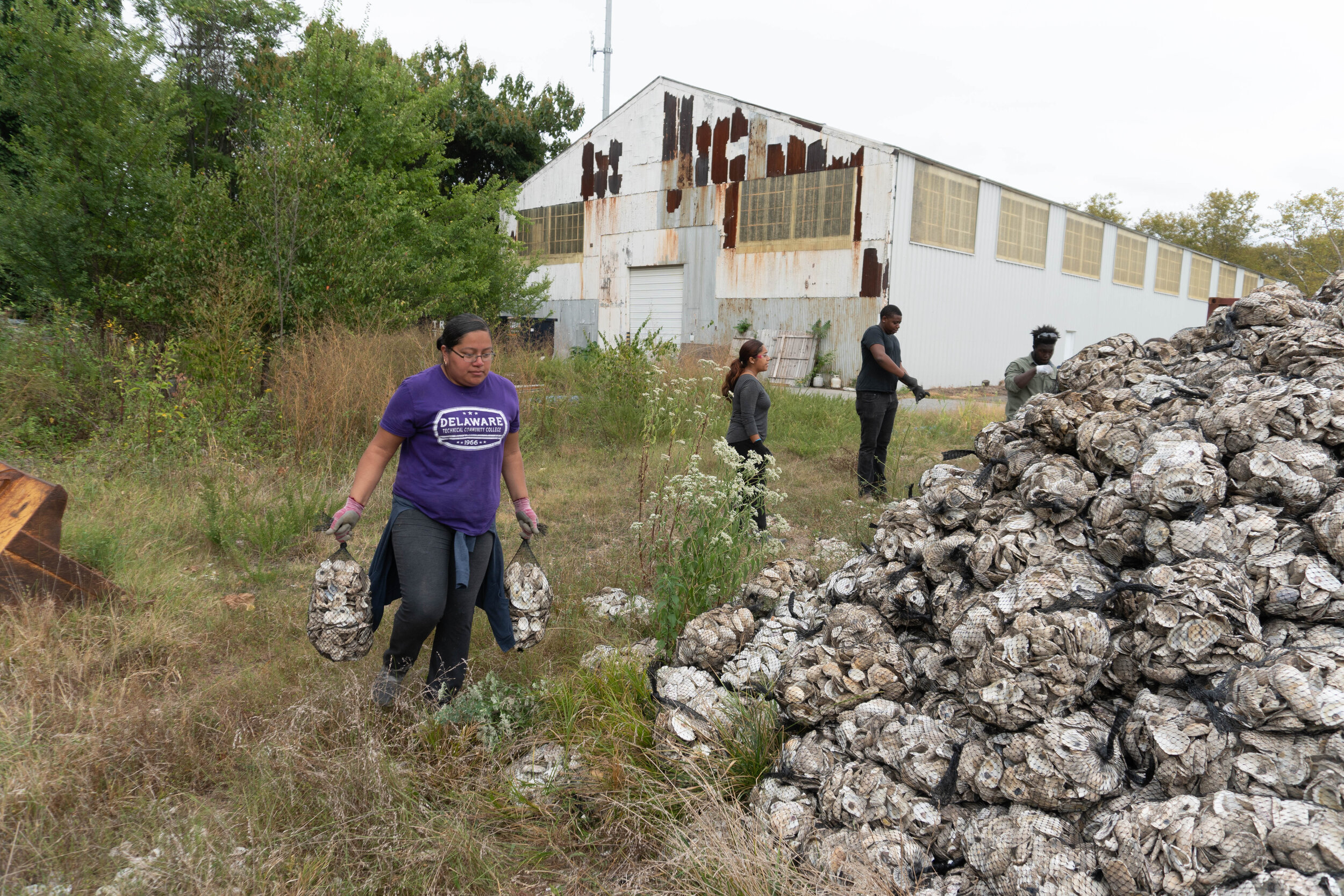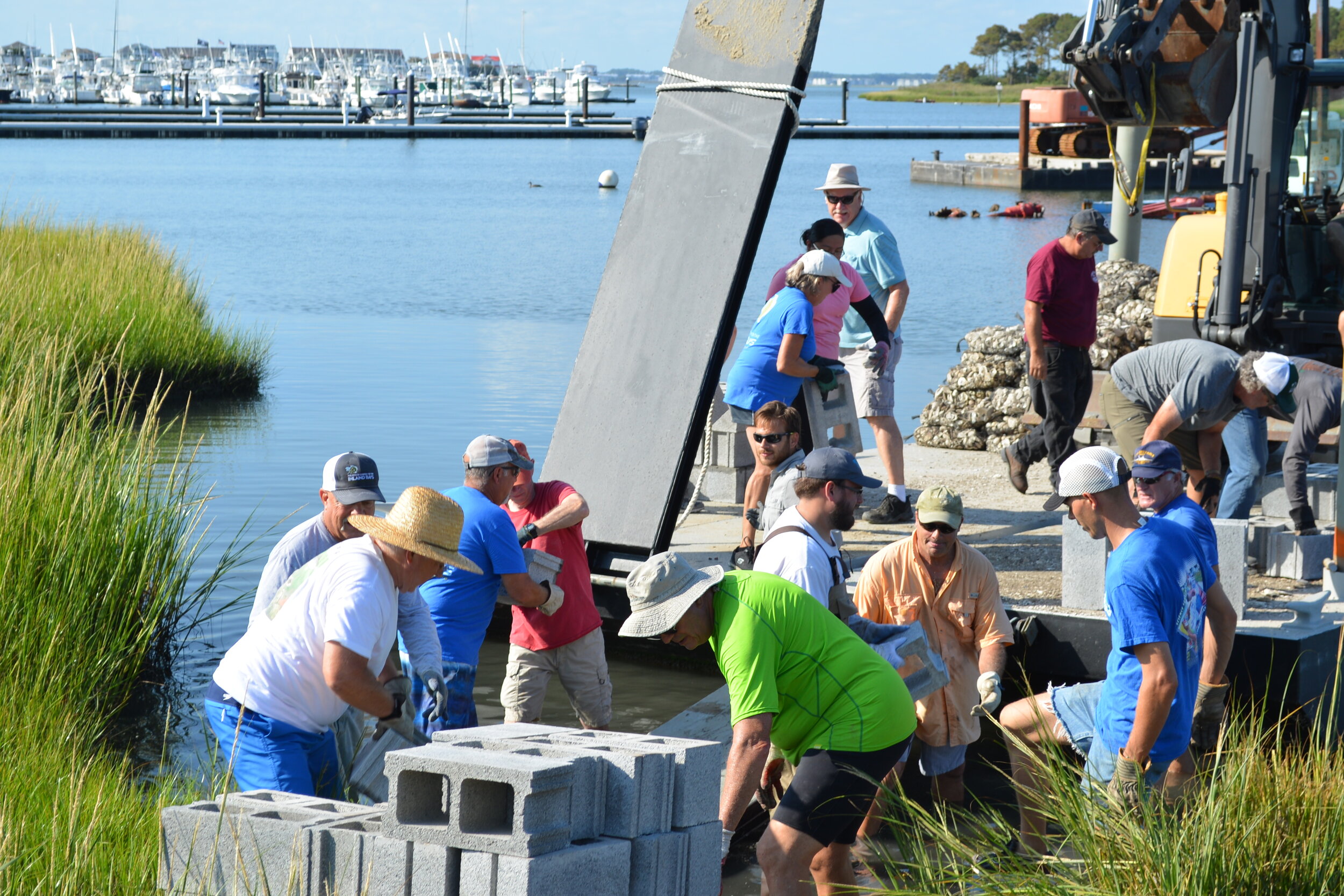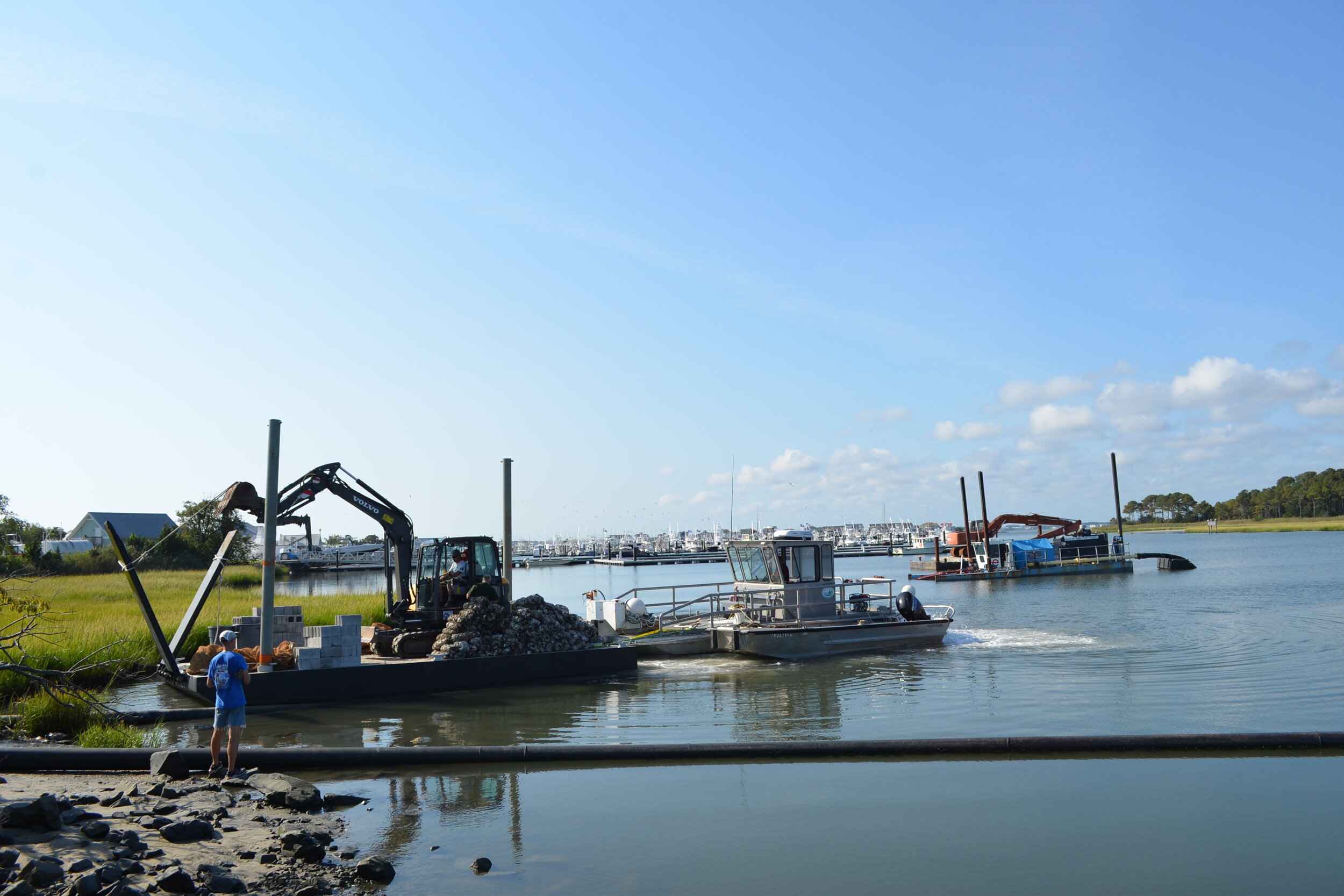Teaching Green Infrastructure
A Delaware Technical and Community College student bags oyster shells collected from Wilmington restaurants
Delaware Sea Grant partners with Del Tech to teach students about Green Infrastructure Projects
When it comes to coastal issues in Delaware, some of the most pressing environmental concerns include sea level rise, coastal flooding and increasingly severe and frequent coastal storms. One of the most environmentally conscious ways to mitigate these events comes through green infrastructure projects—projects that help solve urban and climatic challenges by building with nature.
But getting these projects built in Delaware is a challenge because of a lack of experience in the design and construction of green infrastructure projects in the state.
To help solve this issue and train the next generation of green infrastructure planners, the Delaware Sea Grant College Program has teamed with Delaware Technical and Community College for a professional development opportunity throughout the 2019 fall semester focused on Coastal Green Infrastructure Design and Construction.
Christian Hauser, associate director for Delaware Sea Grant, said that in Delaware, there’s federal and state funding available for green infrastructure projects and a number of municipalities and organizations are interested in moving this type of project forward, but there is a dearth of people qualified to carry out the actual work.
Hauser said it made sense to partner with Del Tech because the school has a number of programs focused on engineering, field work, landscape design and surveying. Some of the students will also be in the program for two years and then immediately enter the workforce.
“The intent was to educate people that may enter the work force sooner, rather than later, so that they’re joining companies and organizations that don’t have that green infrastructure experience,” said Hauser. “Through this program, those students will have that experience.”
Having worked at an environmental consulting firm before joining Delaware Sea Grant, Hauser has worked on green infrastructure projects and explained that a little bit of familiarity with the work can go a long way.
“Just having one person in an organization who says ‘Yes, I know what a living shoreline is’ or ‘I know what a rain garden is, we can do this work’ would hopefully begin to change that paradigm from a grass roots level,” said Hauser.
Green Infrastructure Focus
Students participating in the program are looking at green infrastructure projects throughout coastal watersheds, including at estuarine sites and at freshwater ecosystems in the headwater regions.
The focus on estuarine systems along the coast looks at green infrastructure projects such as living shoreline design and construction, and oyster reefs for improved water quality. The freshwater applications include learning about rain gardens, riparian buffers, and native plants.
The class involves seven one-day field-based internship experiences, during which the students learn about a specific kind of green infrastructure and contribute to work on a project that day. The students are compensated for their work and travel.
Students visited a living shoreline at the Rutgers University Haskin Shellfish Research Laboratory in Newport, New Jersey where they learned about living shoreline design considerations, construction techniques, and the need for long-term monitoring. They also visited North Creek Nursery and Green Lights Native Plant Nursery in Landenberg, Pennsylvania where they learned about the care and maintenance of native plants as well as manufacturing biochar as a soil amendment.
Two of the students also took part in the construction of a subtidal oyster reef with the Delaware Center for the Inland Bays to improve water quality in Rehoboth Bay.
There are other field experiences planned for the fall and Hauser said that the hope is for the students to see how a project works from start to finish.
“Hopefully, they’ll come in and learn, ‘Ok, these are how you generate and procure the necessary construction materials, this is how those materials are placed in a project and this is what goes into designing that project.’ And then they’ll learn what goes into monitoring and maintaining that project,” said Hauser.
In addition, the students will take part in a resume and cover letter review, as well as a mock job interview to test their technical knowledge coming out of the program but also help teach them the soft skills necessary to future employers to help them gain meaningful jobs.
From Classroom to Construction
Lance Miller, an environmental engineering major who came to Del Tech after spending a few years traveling the world, said that he has always been interested in the environment and that he likes how the internship aligns with what he’s learning in his classes.
“One day during the internship, we were doing storm water management with the plant nursery. Well that week in class, we just so happened to learn about storm water management so I got to see theoretically how a rain garden works but then also see exactly how it works in the actual field,” said Miller. “It was a really good idea to take this while I’m taking my environmental science class because they correlate hand in hand.”
Miller said that while he is not sure if he wants to be involved in the actual construction of green infrastructure projects, he would love to work on the policy side to see that environmentally friendly projects get built in the state and in individual communities.
He added that he enjoys learning about the water quality aspects of green infrastructure and learning about how if certain microorganisms are present, it can tell you a lot about the water quality in a body of water.
“I always knew things like oysters cleaned the water, but I didn’t actually really understand that building an artificial oyster reef could help with the water quality so it’s really neat to see exactly how building the green infrastructure has a low impact on the environment and actually helps it,” said Miller.
Hauser said that he has been thrilled with the opportunity to partner with Del Tech, as it allows Delaware Sea Grant the opportunity to broaden the reach of their program.
“We’re reaching different people in Delaware we haven’t reached before, but we’re also reaching people who have the potential to take this elsewhere,” said Hauser. “The students are fantastic, very enthusiastic. Some of them come with a lot of knowledge already, but those that don’t are really interested and engaged in the process and want to learn more.”
International impact
While the focus of the project has been on Delaware and the surrounding region, some of the students are from international backgrounds with two Jamaican-born students and one student from Liberia participating in the class.
Richard Yancy, a civil engineering student at Del Tech, said that he is hoping to take the knowledge learned during the program—especially with regards to erosion and native plants—and apply it back to his home in Liberia. He also noted that he is currently learning about hydraulics and hydrology in a class at Del Tech and welcomed the opportunity to learn about the subjects in the field.
“To take what I learned in class and then actually go out in the field and have a hands-on experience of stream flow has been a very good experience for me,” said Yancy. “When it comes to the environment, I’m trying to one day go back home and make my environment better by building coastal reefs to help control erosion and help with invasive species to build a better environment.”
Partners for the project include Delaware Center for the Inland Bays, the Partnership for the Delaware Estuary, the Stroud Water Research Center, the Delaware Nature Society, North Creek Native Plant Nurseries, Green Light Native Plant Nurseries, Crow and Berry Land Management and others.
Article by Adam Thomas




